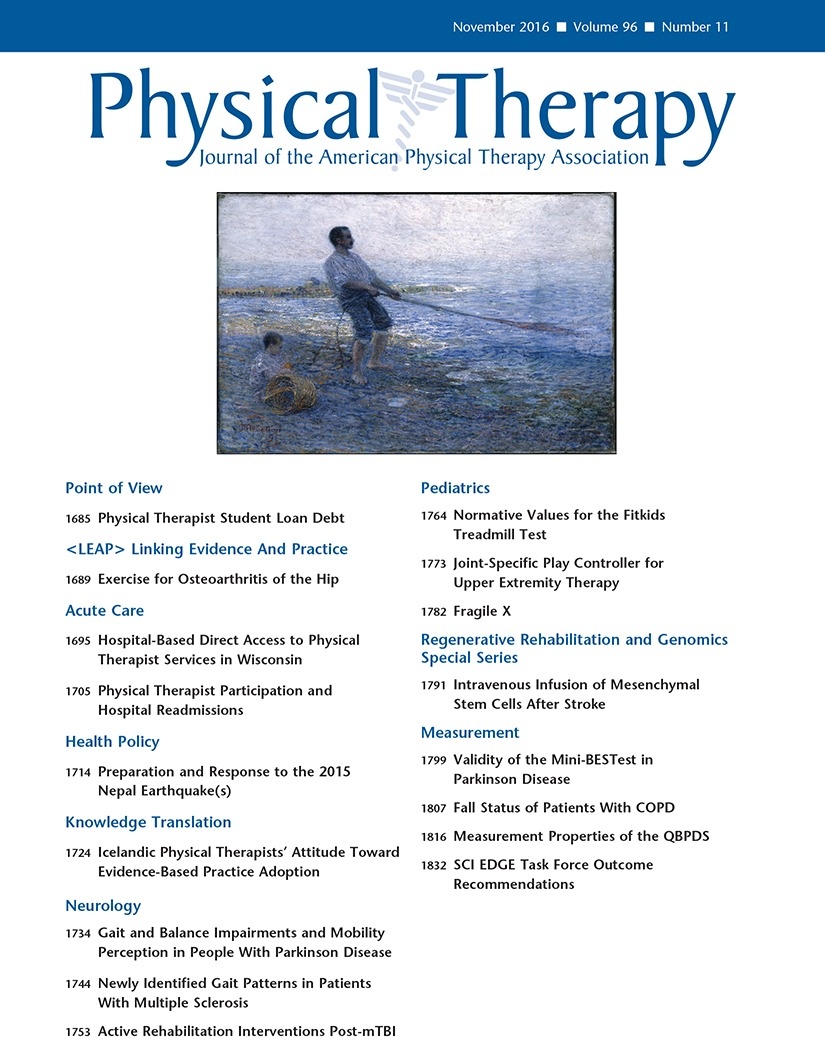
Passive Mobilization of Shoulder Region Joints for People Who Have Shoulder Pain

Passive Mobilization of Shoulder Region Joints for People Who Have Shoulder Pain
Does Passive Mobilization of Shoulder Region Joints Provide Additional Benefit Over Advice and Exercise Alone for People Who Have Shoulder Pain and Minimal Movement Restriction? A Randomized Controlled Trial
Phys Ther. 2011 Feb;91(2):178-89. Epub 2011 Jan 6.Did you know you're eligible to earn 0.5 CME credits for reading this report? Click Here
Synopsis
98 patients presenting with shoulder pain and minimal mobilization restrictions were randomized to either a group receiving passive movement of shoulder region joints paired with exercises and advice or a control group receiving only exercise and advice. The results from this study indicated that the addition of passive mobilization of shoulder region joints did not provide any additional benefits...
To view the full content, login to your account,
or start your 30-day FREE Trial today.
FREE TRIAL
LOGIN
Forgot Password?
Explore some of our unlocked ACE Reports below!

Learn about our AI Driven
High Impact Search Feature
Our AI driven High Impact metric calculates the impact an article will have by considering both the publishing journal and the content of the article itself. Built using the latest advances in natural language processing, OE High Impact predicts an article’s future number of citations better than impact factor alone.
Continue



 LOGIN
LOGIN

Join the Conversation
Please Login or Join to leave comments.